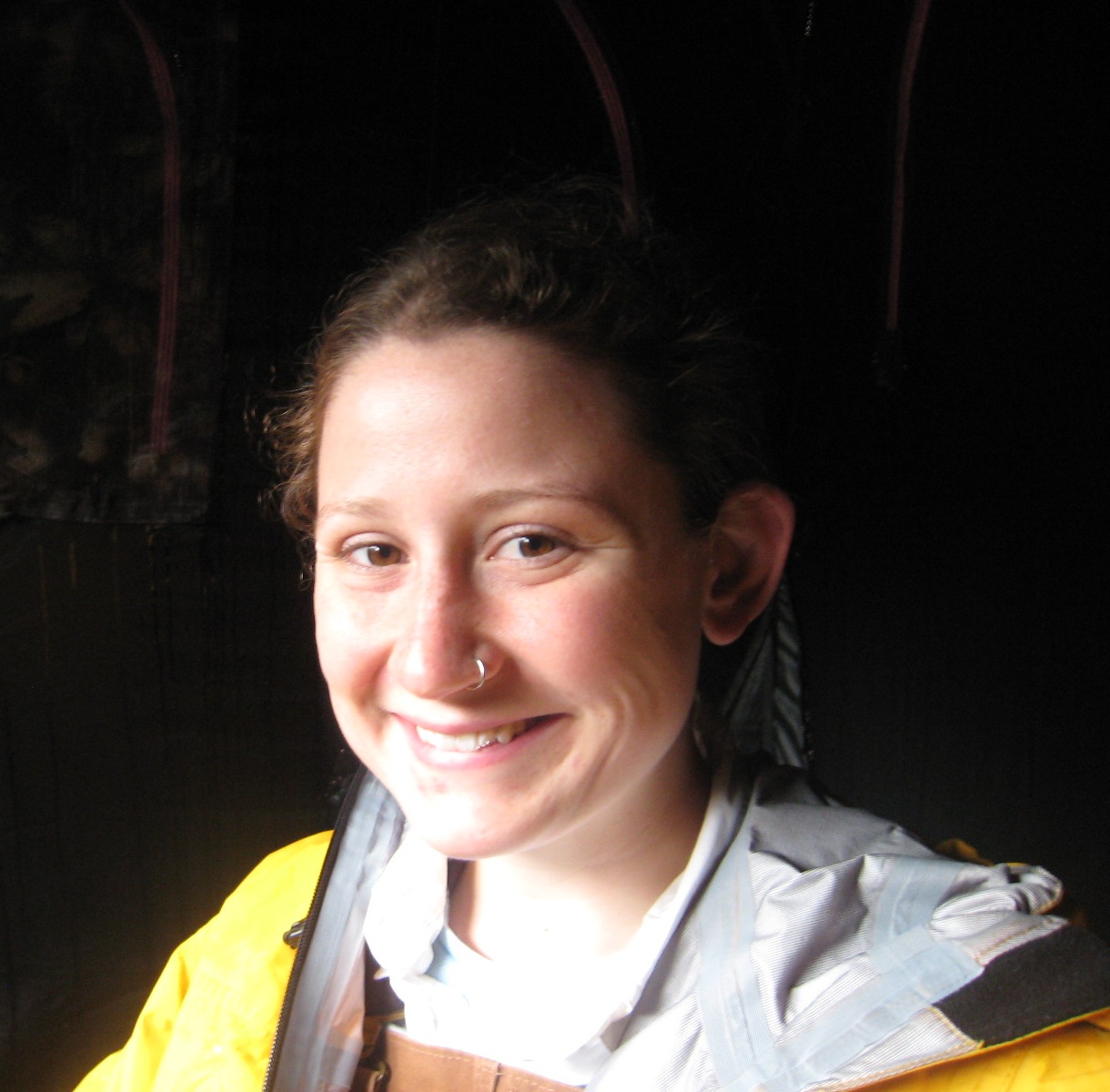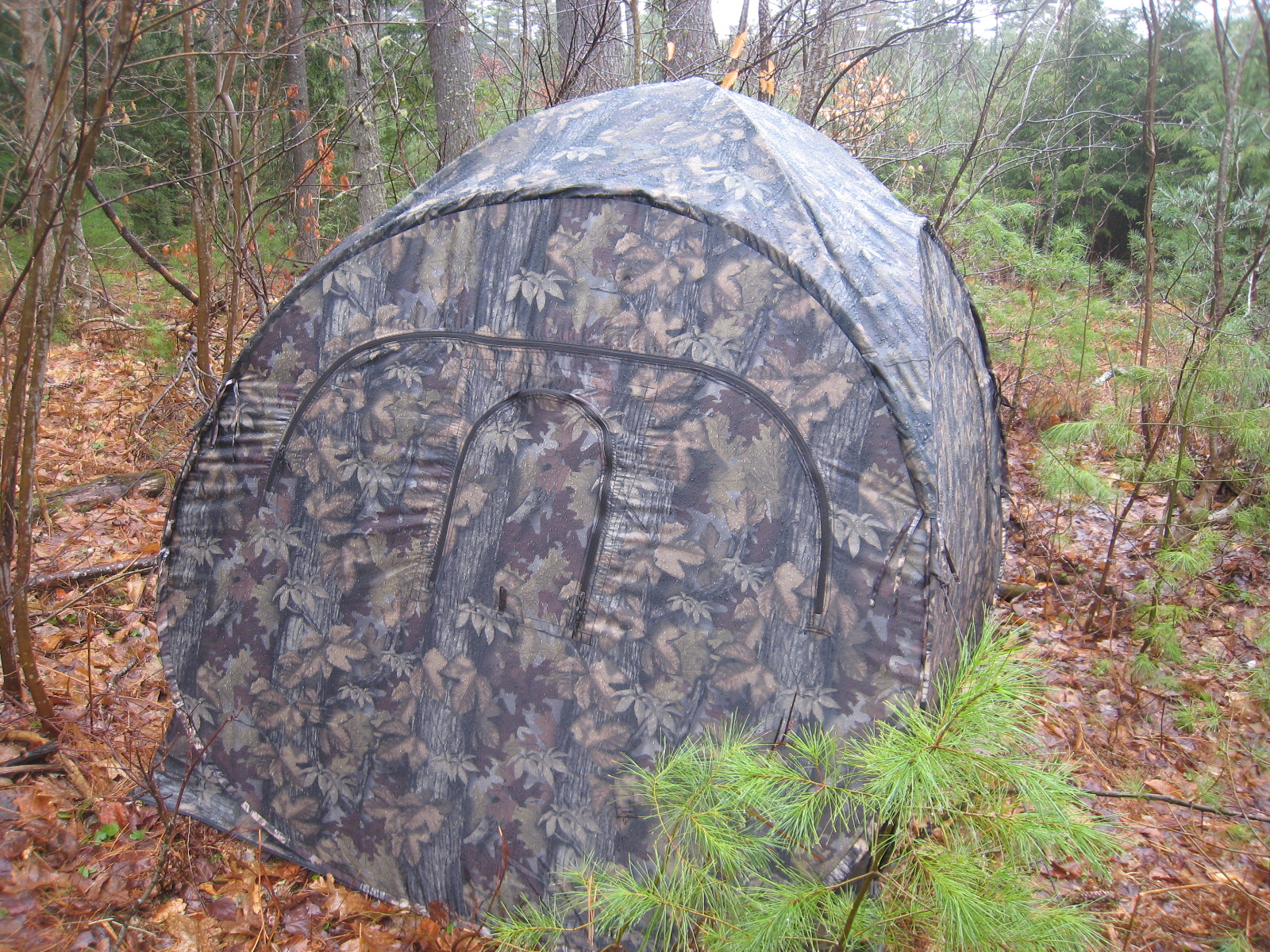April 9, 2012 at 8:15 am
[caption id="attachment_832" align="alignleft" width="300" caption="Molly Meserve is a graduate student at the University of New England."] [/caption]
Hello, my name is Molly Meserve and I am a graduate student at the University of New England in Biddeford, ME. Along with all of you I will be closely observing the fascinating behavior of Maine’s Great Blue Herons this summer. As a Maine native I am particularly interested in this work because the Great Blue Heron has been a constant in my life here in Maine. My master’s thesis focuses on the following question: Do prey delivery rates and total foraging times of Great Blue Herons in coastal and inland colonies differ and how may these factors affect chick survival? With the help of Danielle D’Auria and some wonderful HERON volunteers I have been able to visit a few of the Great Blue Heron colonies in the State. Two of those colonies have been chosen as the main focus of my study; the inland colony is located in Hollis, ME and the coastal colony is in Brunswick, ME. I will be out in the field from April 1st until about mid-August observing from ground blinds that I have set up in each of the sites mentioned above. While in the field I will be focusing on gathering accurate numbers of adults, chicks (their approximate ages), and nestlings along with prey delivery rates and time spent foraging for each nest observed.
[caption id="attachment_833" align="alignleft" width="300" caption="A pop-up blind that Molly will use to observe nesting great blue herons."]
[/caption]
Hello, my name is Molly Meserve and I am a graduate student at the University of New England in Biddeford, ME. Along with all of you I will be closely observing the fascinating behavior of Maine’s Great Blue Herons this summer. As a Maine native I am particularly interested in this work because the Great Blue Heron has been a constant in my life here in Maine. My master’s thesis focuses on the following question: Do prey delivery rates and total foraging times of Great Blue Herons in coastal and inland colonies differ and how may these factors affect chick survival? With the help of Danielle D’Auria and some wonderful HERON volunteers I have been able to visit a few of the Great Blue Heron colonies in the State. Two of those colonies have been chosen as the main focus of my study; the inland colony is located in Hollis, ME and the coastal colony is in Brunswick, ME. I will be out in the field from April 1st until about mid-August observing from ground blinds that I have set up in each of the sites mentioned above. While in the field I will be focusing on gathering accurate numbers of adults, chicks (their approximate ages), and nestlings along with prey delivery rates and time spent foraging for each nest observed.
[caption id="attachment_833" align="alignleft" width="300" caption="A pop-up blind that Molly will use to observe nesting great blue herons."] [/caption]
In order to get a more complete picture of what is happening with the Great Blue Herons inMaineI need the help of the HERON volunteers. The information that would be most beneficial to my work would be accurate counts of chicks in each nest as well as approximate ages, and number of fledglings at the end of the season, especially in comparison with the number of chicks that hatched in each nest. Ideally I would be able to go through your data sheets and see counts and ages of chicks per nest as well as fledglings per nest. This information would be invaluable and offer a broader scope for my project. Previous studies of wading bird foraging and nesting behavior have focused mainly on egrets and many of the studies that do focus on Great Blue Herons are rather dated. This information can be used to provide updated and regional insight into foraging behavior and brood provisioning tactics of the Great Blue Heron on coastal versus inland colonies in Maine. If similarities and/or differences in these behaviors are observed then this will help inform the future management of this species.
[/caption]
In order to get a more complete picture of what is happening with the Great Blue Herons inMaineI need the help of the HERON volunteers. The information that would be most beneficial to my work would be accurate counts of chicks in each nest as well as approximate ages, and number of fledglings at the end of the season, especially in comparison with the number of chicks that hatched in each nest. Ideally I would be able to go through your data sheets and see counts and ages of chicks per nest as well as fledglings per nest. This information would be invaluable and offer a broader scope for my project. Previous studies of wading bird foraging and nesting behavior have focused mainly on egrets and many of the studies that do focus on Great Blue Herons are rather dated. This information can be used to provide updated and regional insight into foraging behavior and brood provisioning tactics of the Great Blue Heron on coastal versus inland colonies in Maine. If similarities and/or differences in these behaviors are observed then this will help inform the future management of this species.
 [/caption]
Hello, my name is Molly Meserve and I am a graduate student at the University of New England in Biddeford, ME. Along with all of you I will be closely observing the fascinating behavior of Maine’s Great Blue Herons this summer. As a Maine native I am particularly interested in this work because the Great Blue Heron has been a constant in my life here in Maine. My master’s thesis focuses on the following question: Do prey delivery rates and total foraging times of Great Blue Herons in coastal and inland colonies differ and how may these factors affect chick survival? With the help of Danielle D’Auria and some wonderful HERON volunteers I have been able to visit a few of the Great Blue Heron colonies in the State. Two of those colonies have been chosen as the main focus of my study; the inland colony is located in Hollis, ME and the coastal colony is in Brunswick, ME. I will be out in the field from April 1st until about mid-August observing from ground blinds that I have set up in each of the sites mentioned above. While in the field I will be focusing on gathering accurate numbers of adults, chicks (their approximate ages), and nestlings along with prey delivery rates and time spent foraging for each nest observed.
[caption id="attachment_833" align="alignleft" width="300" caption="A pop-up blind that Molly will use to observe nesting great blue herons."]
[/caption]
Hello, my name is Molly Meserve and I am a graduate student at the University of New England in Biddeford, ME. Along with all of you I will be closely observing the fascinating behavior of Maine’s Great Blue Herons this summer. As a Maine native I am particularly interested in this work because the Great Blue Heron has been a constant in my life here in Maine. My master’s thesis focuses on the following question: Do prey delivery rates and total foraging times of Great Blue Herons in coastal and inland colonies differ and how may these factors affect chick survival? With the help of Danielle D’Auria and some wonderful HERON volunteers I have been able to visit a few of the Great Blue Heron colonies in the State. Two of those colonies have been chosen as the main focus of my study; the inland colony is located in Hollis, ME and the coastal colony is in Brunswick, ME. I will be out in the field from April 1st until about mid-August observing from ground blinds that I have set up in each of the sites mentioned above. While in the field I will be focusing on gathering accurate numbers of adults, chicks (their approximate ages), and nestlings along with prey delivery rates and time spent foraging for each nest observed.
[caption id="attachment_833" align="alignleft" width="300" caption="A pop-up blind that Molly will use to observe nesting great blue herons."] [/caption]
In order to get a more complete picture of what is happening with the Great Blue Herons inMaineI need the help of the HERON volunteers. The information that would be most beneficial to my work would be accurate counts of chicks in each nest as well as approximate ages, and number of fledglings at the end of the season, especially in comparison with the number of chicks that hatched in each nest. Ideally I would be able to go through your data sheets and see counts and ages of chicks per nest as well as fledglings per nest. This information would be invaluable and offer a broader scope for my project. Previous studies of wading bird foraging and nesting behavior have focused mainly on egrets and many of the studies that do focus on Great Blue Herons are rather dated. This information can be used to provide updated and regional insight into foraging behavior and brood provisioning tactics of the Great Blue Heron on coastal versus inland colonies in Maine. If similarities and/or differences in these behaviors are observed then this will help inform the future management of this species.
[/caption]
In order to get a more complete picture of what is happening with the Great Blue Herons inMaineI need the help of the HERON volunteers. The information that would be most beneficial to my work would be accurate counts of chicks in each nest as well as approximate ages, and number of fledglings at the end of the season, especially in comparison with the number of chicks that hatched in each nest. Ideally I would be able to go through your data sheets and see counts and ages of chicks per nest as well as fledglings per nest. This information would be invaluable and offer a broader scope for my project. Previous studies of wading bird foraging and nesting behavior have focused mainly on egrets and many of the studies that do focus on Great Blue Herons are rather dated. This information can be used to provide updated and regional insight into foraging behavior and brood provisioning tactics of the Great Blue Heron on coastal versus inland colonies in Maine. If similarities and/or differences in these behaviors are observed then this will help inform the future management of this species.Categories